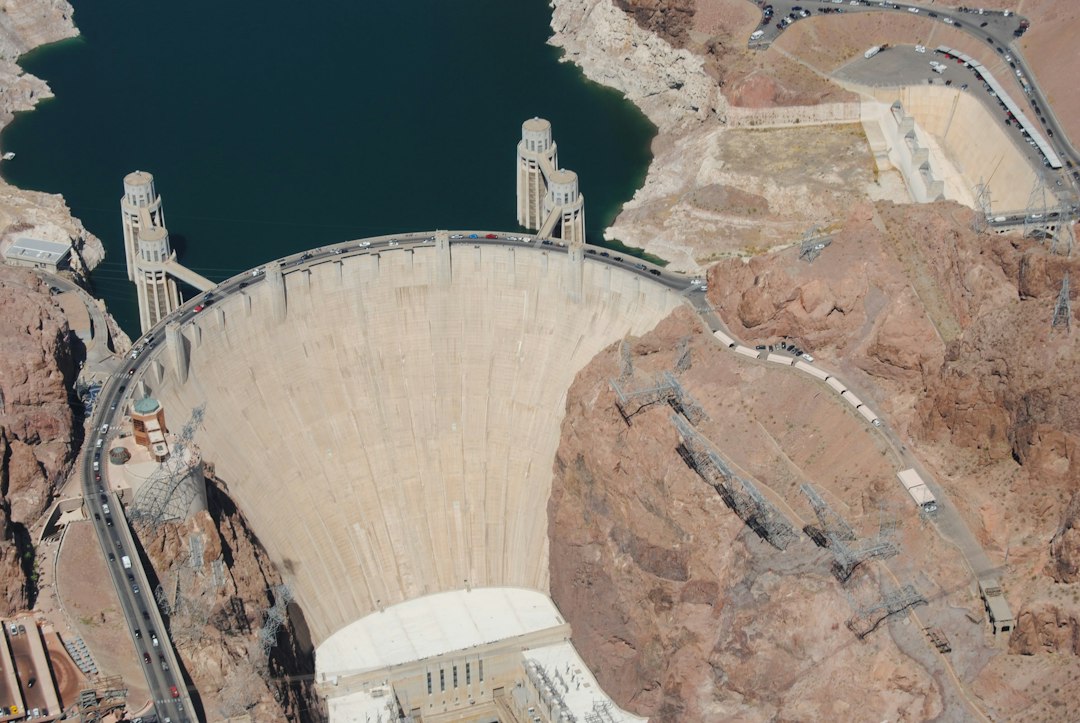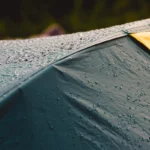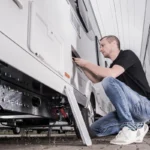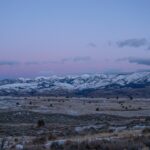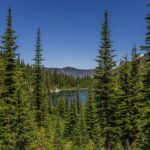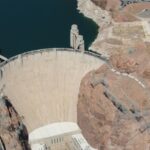Overlanding is a popular outdoor activity that involves traveling long distances in a self-reliant manner, typically in off-road vehicles. It combines elements of camping, off-roading, and adventure travel, allowing enthusiasts to explore remote and rugged areas that are inaccessible by traditional means of transportation. Nevada, with its vast and diverse landscapes, is an ideal state for overlanding. From the rugged mountains of the Sierra Nevada to the expansive deserts of the Great Basin, Nevada offers a wide range of terrain for overlanders to explore. In this blog post, we will provide a comprehensive guide to overlanding in Nevada, including the best off-road trails, hidden gems, camping tips, essential gear and supplies, safety precautions, and unique experiences such as exploring ghost towns and wildlife watching.
The Best Off-Road Trails in Nevada: A Guide for Overlanders
Nevada is home to some of the best off-road trails in the country, offering a variety of terrain and difficulty levels for overlanders. One popular trail is the Rubicon Trail, located in the Lake Tahoe area. This trail is known for its challenging obstacles and breathtaking scenery, making it a favorite among experienced off-roaders. Another notable trail is the Pony Express Trail, which follows the historic route of the Pony Express mail delivery service. This trail offers a mix of dirt roads and rugged terrain, providing a unique glimpse into Nevada’s history.
When navigating off-road trails in Nevada, it is important to be prepared and know what to expect. Many trails in Nevada are remote and can be challenging to navigate, so it is essential to have a reliable GPS system or map and compass. It is also important to have a well-equipped vehicle with proper tires, recovery gear, and emergency supplies. Additionally, it is crucial to respect the environment and follow Leave No Trace principles to minimize your impact on the land.
Discovering Nevada’s Hidden Gems: Overlanding Destinations You Can’t Miss
While Nevada is known for its famous attractions like Las Vegas and Lake Tahoe, the state is also home to many hidden gems that are worth exploring. One such destination is the Valley of Fire State Park, located just outside of Las Vegas. This park features stunning red sandstone formations and offers a variety of hiking and camping opportunities. Another hidden gem is the Great Basin National Park, located in eastern Nevada. This park is known for its diverse ecosystems, including ancient bristlecone pine forests and the Lehman Caves.
Each of these destinations offers unique features that make them worth visiting. The Valley of Fire State Park, for example, is known for its vibrant red rock formations and petroglyphs left by ancient civilizations. The Great Basin National Park, on the other hand, offers opportunities for stargazing and exploring underground caves. These hidden gems provide a chance to escape the crowds and experience the natural beauty of Nevada.
Camping in Nevada: Tips and Tricks for Overlanders
| Topic | Metric |
|---|---|
| Camping Locations | Number of campsites available in Nevada |
| Weather | Average temperature during camping season |
| Equipment | List of essential camping gear for overlanders |
| Activities | Popular outdoor activities in Nevada |
| Wildlife | List of common wildlife species in Nevada |
| Regulations | Rules and regulations for camping in Nevada |
| Safety | Tips for staying safe while camping in Nevada |
Camping is an integral part of the overlanding experience, allowing travelers to immerse themselves in nature and enjoy the solitude of remote areas. Nevada offers a wide range of camping options, from established campgrounds to dispersed camping on public lands. Some popular camping spots in Nevada include Red Rock Canyon National Conservation Area, Lake Mead National Recreation Area, and the Humboldt-Toiyabe National Forest.
When setting up camp in Nevada, it is important to choose a suitable location that adheres to local regulations and minimizes your impact on the environment. Look for established campsites whenever possible and avoid camping on fragile vegetation or near water sources. It is also important to pack out all trash and leave your campsite as you found it.
In terms of gear, there are a few essential items that every overlander should have. These include a reliable tent or rooftop tent, sleeping bags, cooking equipment, and a portable stove. It is also important to have a sufficient supply of food and water, as well as a first aid kit and emergency supplies. Additionally, it is recommended to have a portable toilet or waste disposal system to minimize your impact on the environment.
Preparing for Your Overlanding Adventure: Essential Gear and Supplies
Before embarking on an overlanding adventure in Nevada, it is important to ensure that you have all the necessary gear and supplies. Some essential items to consider include:
– A reliable off-road vehicle: Choose a vehicle that is capable of handling the rugged terrain in Nevada. Consider factors such as ground clearance, four-wheel drive capability, and durability.
– Recovery gear: This includes items such as a winch, recovery straps, shackles, and a shovel. These tools will come in handy if you get stuck or need to help others.
– Navigation tools: A GPS system or map and compass are essential for navigating off-road trails in Nevada. Make sure to have backup navigation tools in case of technical failures.
– Communication devices: It is important to have a reliable means of communication in case of emergencies. Consider bringing a satellite phone or a two-way radio.
– Camping equipment: This includes items such as a tent or rooftop tent, sleeping bags, cooking equipment, and a portable stove. Don’t forget to pack sufficient food and water for your trip.
When packing for your overlanding adventure, it is important to be efficient and prioritize essential items. Consider the weight and space limitations of your vehicle and pack accordingly. It is also recommended to make a checklist of all the gear and supplies you need to ensure that nothing is forgotten.
Safety First: Overlanding in Nevada’s Remote Areas
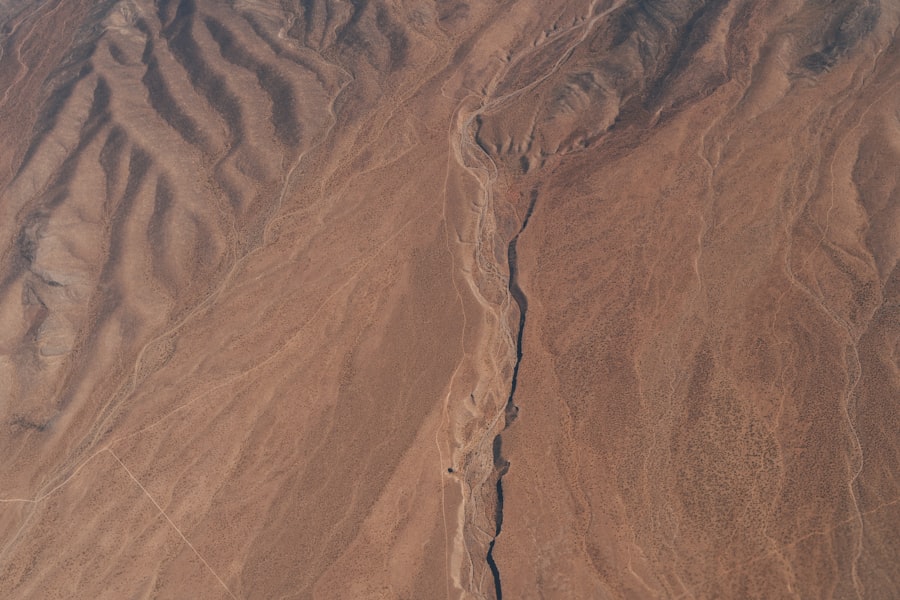
Overlanding in remote areas of Nevada can be an exhilarating experience, but it also comes with certain risks and safety hazards. It is important to be prepared and take necessary precautions to ensure a safe journey. Some potential safety hazards to be aware of in Nevada include extreme weather conditions, wildlife encounters, and the risk of getting lost or stranded.
To stay safe while overlanding in Nevada, it is important to plan your trip carefully and be aware of the potential risks. Check weather forecasts and road conditions before setting out, and be prepared for sudden changes in weather. It is also important to familiarize yourself with the local wildlife and know how to respond in case of encounters. Keep a safe distance from wildlife and never feed or approach them.
In case of an emergency, it is important to have a plan in place. Make sure to inform someone of your travel plans and expected return date. Carry a first aid kit and know how to use it. It is also recommended to have a satellite phone or emergency beacon for communication in remote areas.
Exploring Nevada’s Ghost Towns: A Unique Overlanding Experience
One unique experience that overlanders can enjoy in Nevada is exploring the state’s ghost towns. Nevada is home to numerous abandoned mining towns that offer a glimpse into the state’s rich history. Some popular ghost towns to visit include Rhyolite, Goldfield, and Berlin-Ichthyosaur State Park.
To access these ghost towns via overlanding, it is important to have a reliable off-road vehicle that can handle the rugged terrain. Many ghost towns are located in remote areas with limited or no services, so it is important to be self-sufficient and carry all necessary supplies. When exploring ghost towns, it is important to respect the historical sites and not disturb any artifacts or structures.
When visiting ghost towns, you can expect to see remnants of old buildings, mines, and other structures that were once part of thriving communities. Some ghost towns also offer guided tours or interpretive displays that provide insight into their history. Exploring these ghost towns is a unique way to connect with Nevada’s past and experience the state’s rich heritage.
Wildlife Watching in Nevada: Overlanding Through the State’s Natural Wonders
Nevada is home to a diverse range of wildlife, making it a great destination for wildlife watching. Overlanders can spot a variety of animals, including bighorn sheep, mule deer, pronghorn antelope, and various bird species. Some of the best places to spot wildlife while overlanding in Nevada include the Ruby Mountains, Great Basin National Park, and the Black Rock Desert.
When observing wildlife, it is important to do so from a safe distance and avoid disturbing or approaching the animals. Use binoculars or a telephoto lens to get a closer look without intruding on their natural behavior. It is also important to respect any closures or restrictions in place to protect wildlife habitats.
Overlanding in Nevada’s Deserts: Challenges and Rewards
Overlanding in Nevada’s deserts presents its own set of challenges and rewards. The state is home to vast desert landscapes, including the Mojave Desert, the Great Basin Desert, and the Black Rock Desert. These deserts offer unique opportunities for exploration and solitude, but they also require careful planning and preparation.
One of the main challenges of overlanding in the desert is the extreme temperatures. Nevada’s deserts can reach scorching temperatures during the day and freezing temperatures at night. It is important to pack appropriate clothing and gear to stay comfortable in these conditions. It is also crucial to carry sufficient water and stay hydrated.
Despite the challenges, overlanding in Nevada’s deserts offers many rewards. The vast open spaces and stunning landscapes provide a sense of freedom and adventure. The deserts are also home to unique flora and fauna that can be found nowhere else. Overlanders can experience the solitude and tranquility of these remote areas while enjoying breathtaking sunsets and starry nights.
The Ultimate Nevada Road Trip: Overlanding from North to South
For those looking for the ultimate overlanding adventure in Nevada, a road trip from north to south is a great option. This road trip allows travelers to experience the diverse landscapes and attractions that the state has to offer. The route can be customized based on personal preferences and time constraints, but some key stops along the way include Lake Tahoe, Reno, Virginia City, Las Vegas, and the Hoover Dam.
When planning a road trip in Nevada, it is important to consider factors such as driving distances, road conditions, and available services. Some areas of Nevada are remote and have limited services, so it is important to plan accordingly and carry all necessary supplies. It is also recommended to check for any road closures or construction before setting out.
During the road trip, take the time to explore each destination and immerse yourself in the local culture and attractions. Whether it’s hiking in the Sierra Nevada mountains, trying your luck at a casino in Las Vegas, or taking a scenic drive through Red Rock Canyon, there is something for everyone to enjoy on this ultimate Nevada road trip.
Overlanding in Nevada offers a unique and adventurous way to explore the state’s diverse landscapes and attractions. From the best off-road trails to hidden gems, camping tips, essential gear and supplies, safety precautions, and unique experiences such as exploring ghost towns and wildlife watching, there is something for every overlander in Nevada. So pack your bags, prepare your vehicle, and embark on an unforgettable overlanding adventure in the Silver State. Don’t forget to share this blog post with others who may be interested in exploring Nevada’s rugged beauty. Happy overlanding!
If you’re planning an overlanding adventure in Nevada, you’ll want to check out this article on “Where to Go Overlanding in Nevada” from Overlanding America. It provides a comprehensive guide to the best off-road routes, camping spots, and hidden gems in the state. Whether you’re a seasoned overlander or just starting out, this article will help you plan an unforgettable trip. Read more
FAQs
What is overlanding?
Overlanding is a type of self-reliant travel where the journey is the primary goal, often involving off-road vehicles and camping equipment.
What are some popular overlanding destinations in Nevada?
Some popular overlanding destinations in Nevada include the Black Rock Desert, Valley of Fire State Park, and the Ruby Mountains.
What kind of vehicle do I need for overlanding in Nevada?
A high-clearance, four-wheel-drive vehicle is recommended for overlanding in Nevada, as many of the roads and trails are unpaved and can be rough.
Do I need a permit to go overlanding in Nevada?
It depends on the specific location you plan to visit. Some areas may require permits for camping or off-road driving. It’s best to check with the local land management agency for the area you plan to visit.
What should I bring for an overlanding trip in Nevada?
Some essential items to bring for an overlanding trip in Nevada include a reliable vehicle, camping gear, food and water, navigation tools, and emergency supplies.
What is the best time of year to go overlanding in Nevada?
The best time of year to go overlanding in Nevada is typically in the spring or fall, when temperatures are milder and there is less chance of extreme weather conditions. Summer can be very hot, and winter can bring snow and ice to higher elevations.
